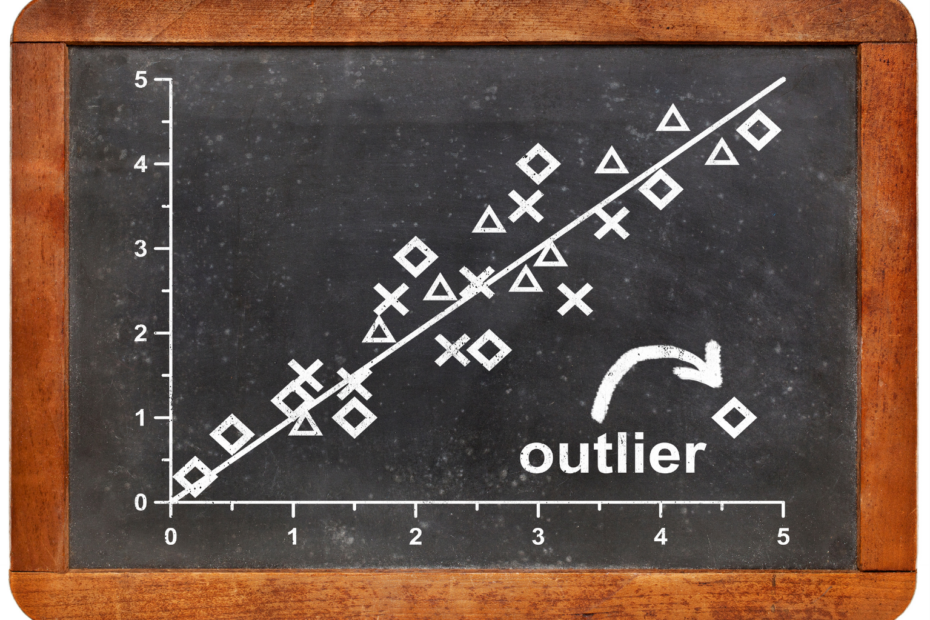In programming and for databases, data types are used to specify the type of a variable. This also determines, which operations can be performed with these variables and which leads to errors. For example, when storing a text, mathematical operations such as additions are not possible.
What are Data Types?
In computer science, one defines data types for which a certain set of operations is possible without problems. With all data, which belong to a data type, these operations can be accomplished and it is ensured that no error message occurs.
For example, for the “Integer” data type, the “Add” and “Subtract” operations are defined. This means that if we have any two elements of the “Integers” data type, then they can add or subtract and no error will occur. On the other hand, two objects of the “Text” data type cannot perform this operation because this is not defined for the data type.
What do you use Data Types for?
The use of data types makes it possible to perform certain operations between several variables in programming. For each data type, certain calculations or transformations are defined, which can be executed with another variable of the same data type without problems.
To make sure that runtime errors cannot occur during operations with multiple variables, one uses the so-called type system.
What is the Type System in Computer Science?
The Type System is the term used in computer science to describe the possibility of restricting the value ranges of a variable within a programming language. These systems can be classified into a total of three classes:
- Strong vs. Weak: This is about how strictly the respective programming language distinguishes the types. For example, strict type systems do not allow variables to be converted to another data type after the variable has been defined.
- Dynamic vs. Static: This dimension is about when the typing of the object takes place. For example, in Python, the variable itself does not have a data type, only the object assigned to the variable does. This is called dynamic typing. However, this also means that errors due to incompatible data types are not detected until the entire program is started. With static typing (for example in Java), the data type of the variables must be explicitly defined while writing the program.
- Explicit vs. Implicit: This dimension is closely interwoven with static/dynamic typing. It is a question of whether the data type of a variable is already explicitly specified during the definition, or is only implicitly recognizable via the assignment of the object.
General Data Types
Depending on the programming language or database, different data types are defined, which is why the names can also differ slightly. However, the general data types are very similar between different systems and programming languages.
Integer (int)
Integers are used for numbers, i.e. for positive and negative numbers without decimal places, for example, -841 or +903.
Floating Point (Float)
The float data type is also used for numeric variables, but unlike integers, they also have decimal numbers, e.g. -130.45 or +923.58923.
String
The string in turn denotes textual variables whose values are stored in quotation marks, i.e. ” ” or ‘ ‘. In addition to character strings consisting of letters, the string can also store numbers or other symbols. However, these are not interpreted as numbers, meaning no arithmetic operations are possible with them.
Boolean
Boolean data types are used when a variable can take exactly one of two possible values. In many cases, either the value pairs 0/1 or true/false are used.
Datetime
The Datetime data type stores values that contain a date including a time, such as 2021-09-12 15:23:41, so the format used for this is YYYY-MM-DD hh:mm:ss.
Timestamp
The timestamp is another way to store temporal information in a variable. The most common is the so-called Unix Timestamp, which measures how many seconds (depending on the format also milliseconds) have passed since 01/01/1970.
Character
This data type is used to store single letters, symbols, numbers, etc. It is also possible to store a single space character.
Why should you care about Type Systems as a Programmer?
In many programming languages, data types are explicit, so already when a variable is defined, it must be specified which data type it has. So in these cases, a programmer has no choice but to deal with data types.
However, it also makes sense in implicit programming languages, such as Python, to keep the data types at least in mind. As soon as Python recognizes a data type with which the desired operation is not executable, a so-called type error is returned.

So when these errors occur, you immediately know where to look to get the code running again. It must be an operation that is not possible with the given data types. So, either we used the wrong operation for the given data types or the variables have other data types that we did not intend them to have.
To avoid this mistake, we can check the data type of a variable and only run the operation if we are sure that the types are correct:

Since Python version 3 there is also the possibility to declare the data type when defining a function. That way, the programmer defines exactly which types she expects as inputs and what types she provides as output.

However, a type error is not automatically issued if this declaration is violated. Nevertheless, the specification helps other programmers in the team to understand the code better and to adjust downstream functions to this function at hand. In addition, it helps the programming front-ends to better adjust their auto-completion to the given data type and thus detect errors at an early stage.
Another advantage of data types is the optimization of performance and data storage. For example, integer variables require significantly less memory than decimal numbers. At the same time, integers can also process values faster than variables of the type double.
How do you choose the right data type?
Choosing the right data type is an important step in any data analysis task, as it can have a significant impact on the accuracy and reliability of the results. Here are some key factors to consider when choosing the right data type:
- Nature of the Data: The first factor to consider is the nature of the data itself. Is the data discrete or continuous? Is it numerical or categorical? Is it time series data or spatial data? Understanding the nature of the data can help you determine which data type is best suited for the analysis.
- Analysis Task: The second factor to consider is the analysis task that you want to perform. Are you trying to identify patterns in the data? Do you want to compare groups of data? Do you want to predict future trends or outcomes? The analysis task can help you determine which data type is best suited for the analysis.
- Software or Tool Requirements: The third factor to consider is any software or tools that you plan to use for the analysis. Some tools may require specific data types or formats, so it’s important to understand these requirements before choosing a data type.
- Data Volume and Quality: The fourth factor to consider is the volume and quality of the data. If you have a large amount of data, you may need to use a data type that is optimized for large datasets, such as time series data. If the data is noisy or contains missing values, you may need to use a data type that can handle missing or incomplete data, such as categorical data.
- Visualization Needs: The final factor to consider is any visualization needs that you have for the data. Some data types may be better suited for certain types of visualizations, such as histograms for numerical data or bar charts for categorical data.
In general, choosing the right data type involves a combination of understanding the nature of the data, the analysis task, any software or tool requirements, the volume and quality of the data, and any visualization needs. By considering these factors carefully, you can choose the data type that is best suited for your analysis task and maximize the accuracy and reliability of your results.
This is what you should take with you
- Data types are used to define the type of a variable. This also determines which operations are possible with the variable and which are not.
- Typing is the ability to restrict the value ranges of a variable.
- In general, there are the data types Integer, Floating Point, String, Boolean, Datetime Timestamp, and Character. In addition, there are more defined data types, which can vary depending on the programming language or database.
Thanks to Deepnote for sponsoring this article! Deepnote offers me the possibility to embed Python code easily and quickly on this website and also to host the related notebooks in the cloud.
What is the Univariate Analysis?
Master Univariate Analysis: Dive Deep into Data with Visualization, and Python - Learn from In-Depth Examples and Hands-On Code.
What is OpenAPI?
Explore OpenAPI: A Comprehensive Guide to Building and Consuming RESTful APIs. Learn How to Design, Document, and Test APIs.
What is Data Governance?
Ensure the quality, availability, and integrity of your organization's data through effective data governance. Learn more here.
What is Data Quality?
Ensuring Data Quality: Importance, Challenges, and Best Practices. Learn how to maintain high-quality data to drive better business decisions.
What is Data Imputation?
Impute missing values with data imputation techniques. Optimize data quality and learn more about the techniques and importance.
What is Outlier Detection?
Discover hidden anomalies in your data with advanced outlier detection techniques. Improve decision-making and uncover valuable insights.
Other Articles on the Topic of Data Types
- On this page, you will find an overview of all data types in the Python programming language and useful commands on how to define or change them.

Niklas Lang
I have been working as a machine learning engineer and software developer since 2020 and am passionate about the world of data, algorithms and software development. In addition to my work in the field, I teach at several German universities, including the IU International University of Applied Sciences and the Baden-Württemberg Cooperative State University, in the fields of data science, mathematics and business analytics.
My goal is to present complex topics such as statistics and machine learning in a way that makes them not only understandable, but also exciting and tangible. I combine practical experience from industry with sound theoretical foundations to prepare my students in the best possible way for the challenges of the data world.





